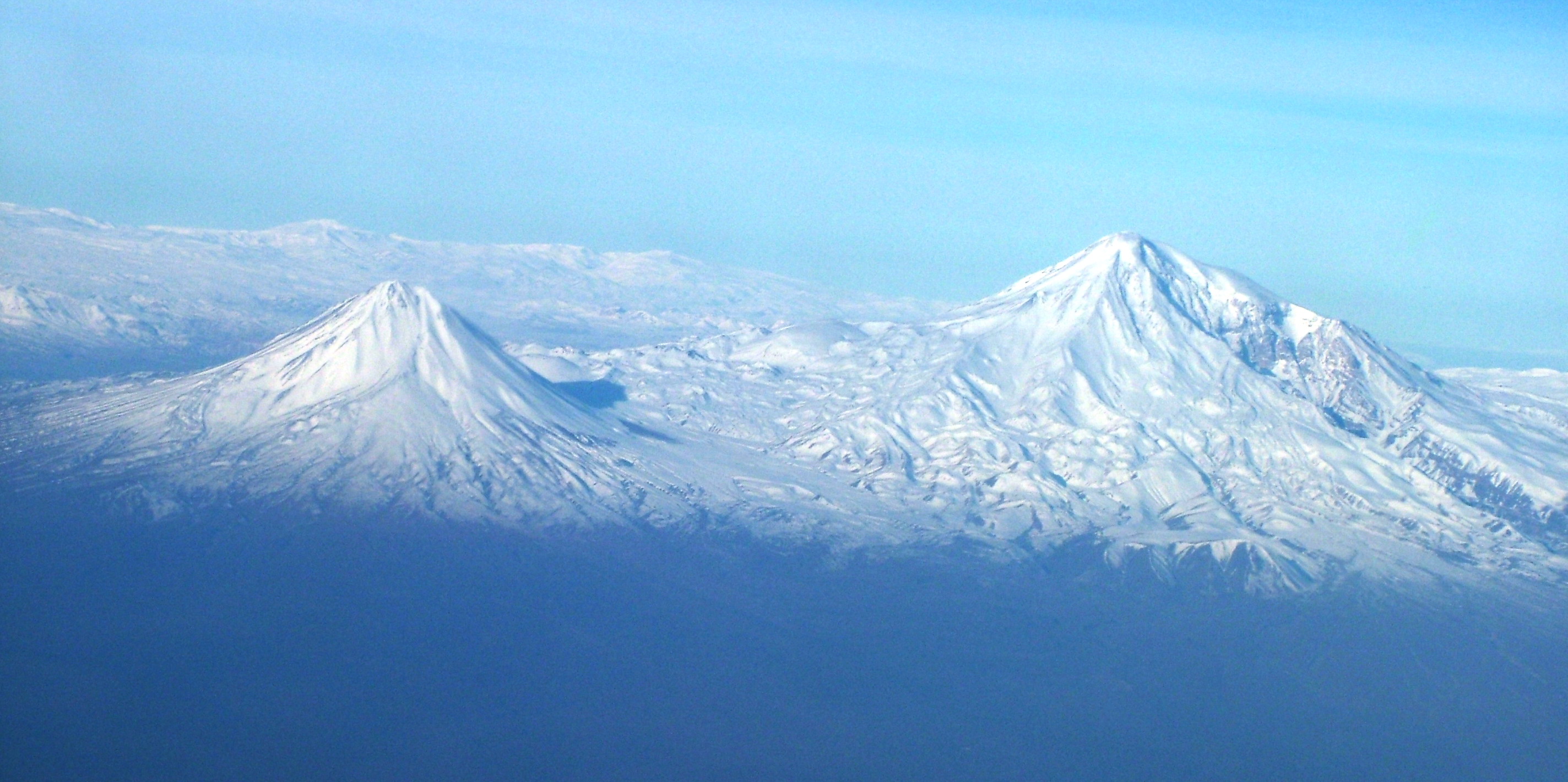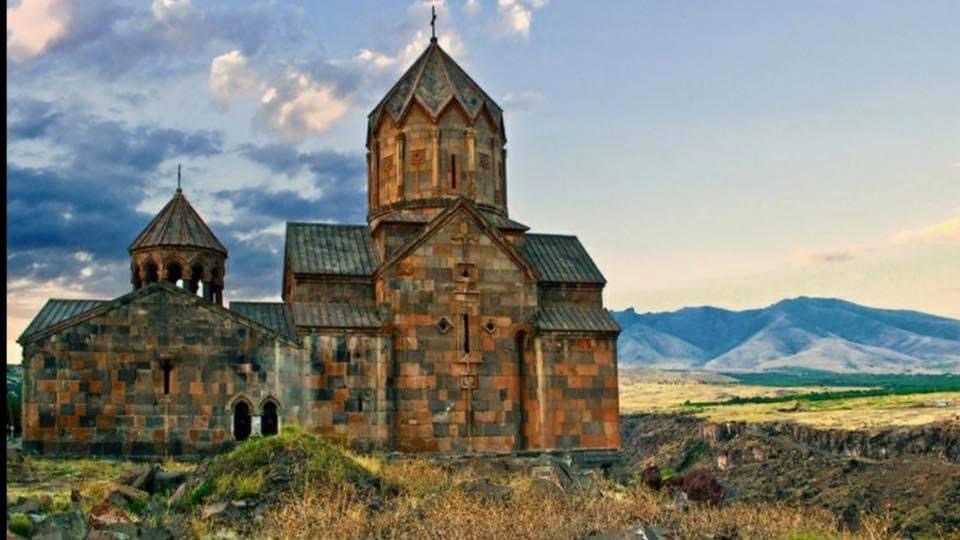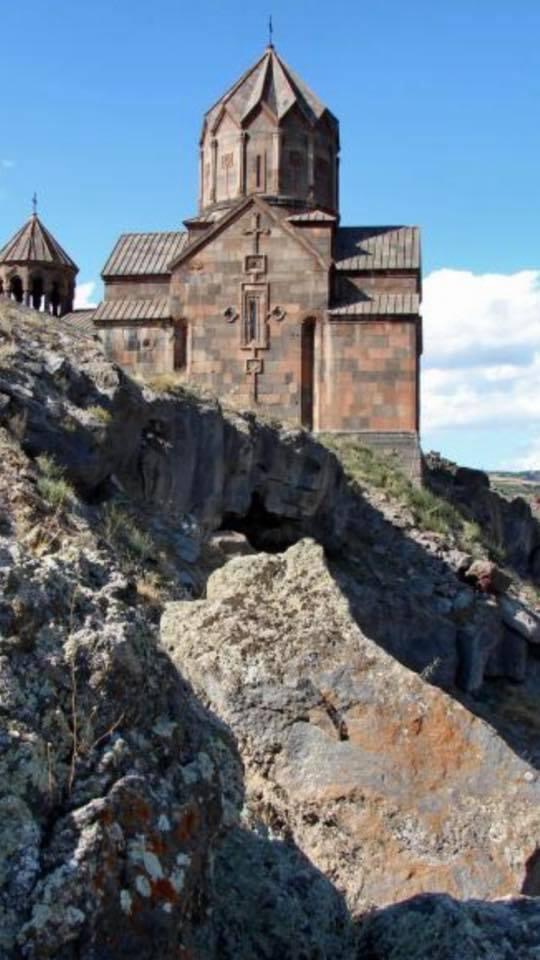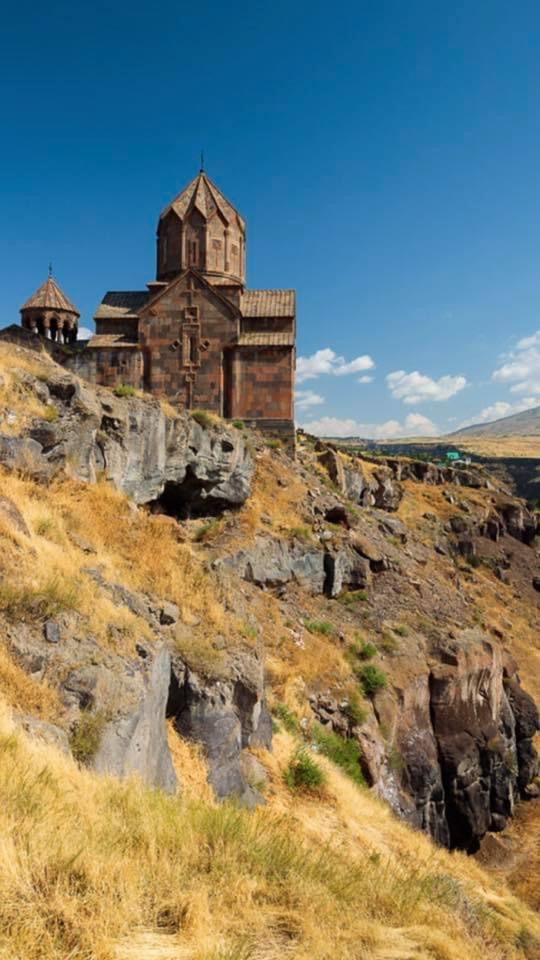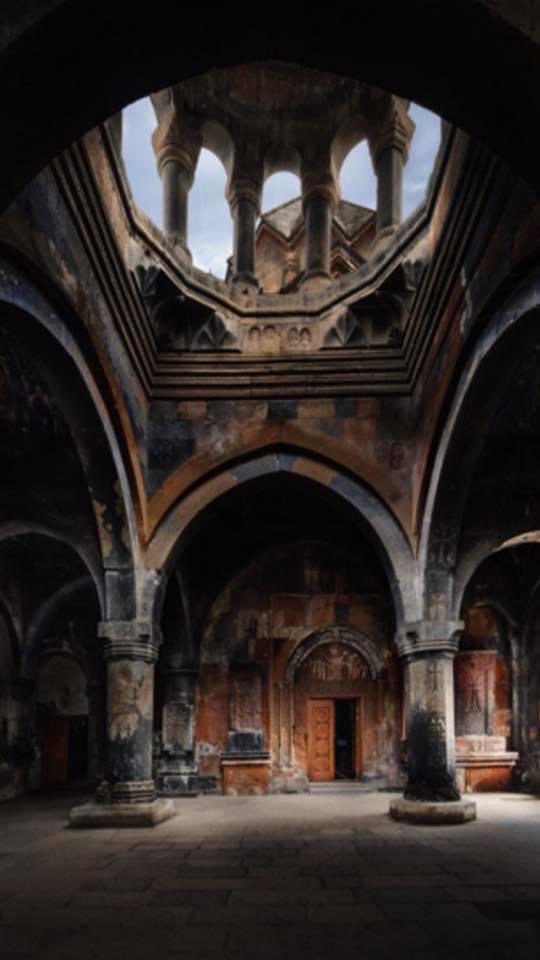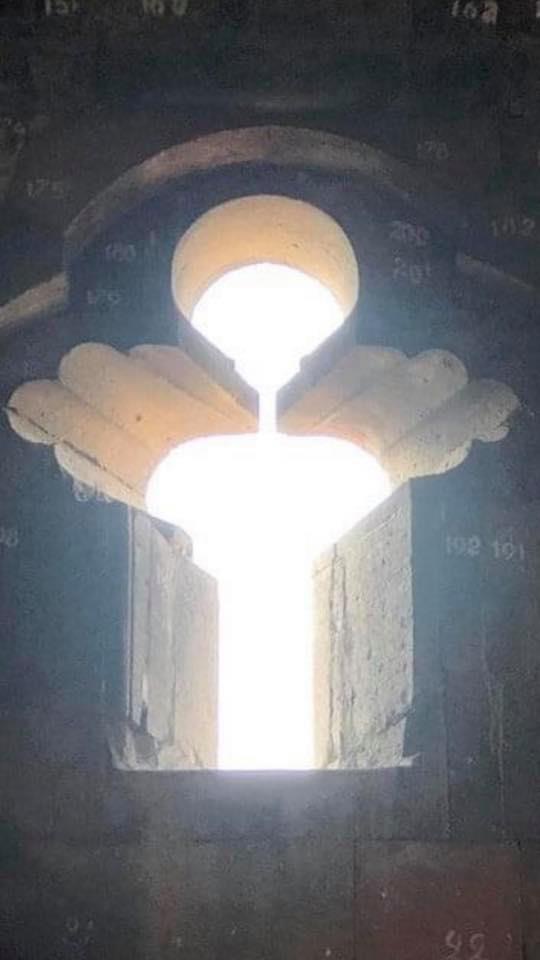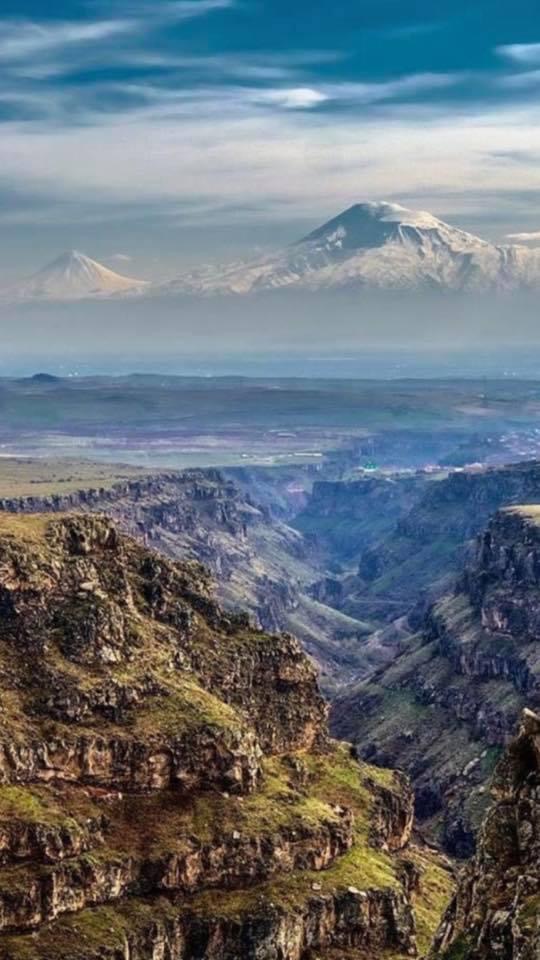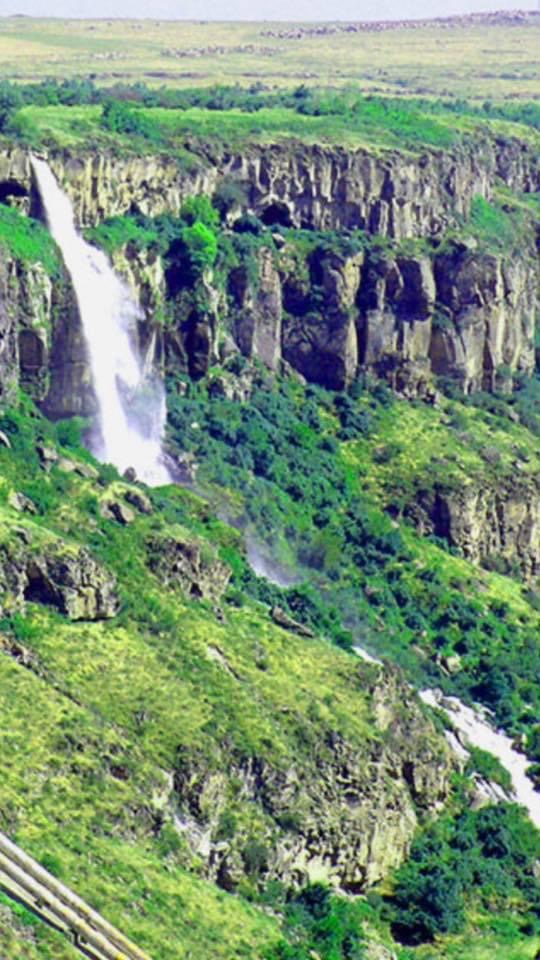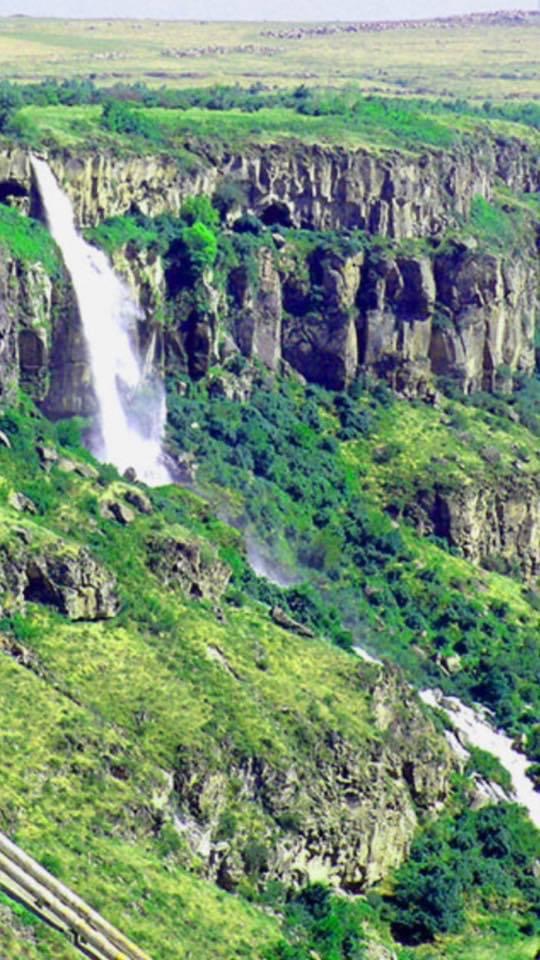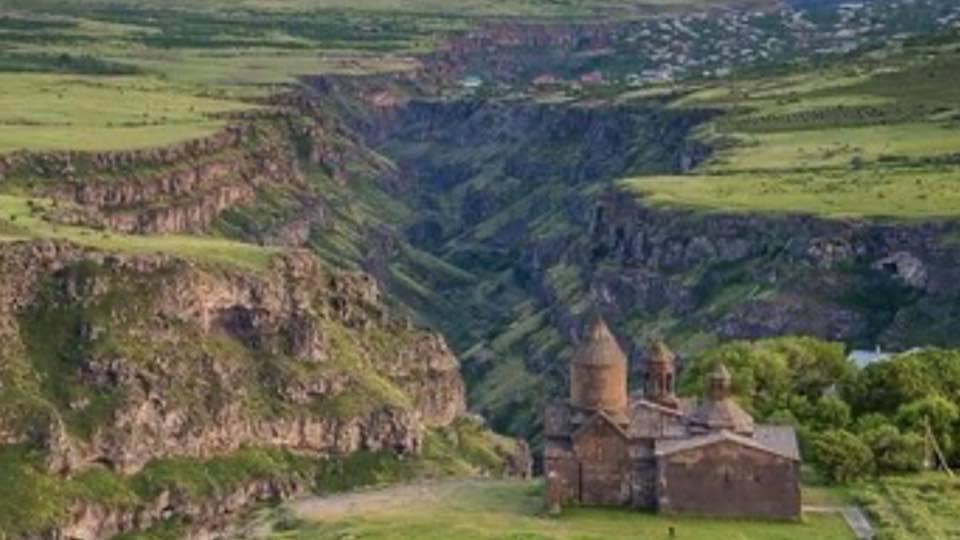Return
|
Ref ID: 1PY2021/8347 | Posted On: 10-02-2021 | Updated on: 10-02-2021
|
|
Monastery of Hovhanavank - 4th to 13th century AD
Click on photo to view full image or click to watch video.
The Kasagh river gorge of Aragatsotn region of Eastern Armenia is rich with natural and man made wonders ... Human civilization goes back to ancient times and left us many interesting traces ...
The monastery of Hovhanavank comes to us from the time when Christianity was adapted as the state official religion by king Tiridates the 3rd and first Catholicos of Armenia ( head of the church) Gregory the Illuminator who is credited establishing this church by converting earlier Armenian pagan temple dedicated to goddess Astgik ( Roman equivalent of goddess Aphrodite) .
This reportedly took place at 301 when Armenia became first state in the world to adopt Christianity as state official religion.
As elsewhere in the world many pagan temples were converted to churches and used as such ... or new ones were built on the sites of destroyed temples... As time went one , more magnificent structures were added , case in point early 13th century cathedral and Gavit or Narthex that were commissioned by princely Vachutyan family . Their family coat of arms, an eagle that captured a dove has survived on the monument as a carved base relief. The monument is richly decorated with intricate base reliefs , and Khachkars or cross stone monuments, both in the interiors and exteriors
Of the monument . During excavations and repairs archeologists have discovered a secret tunnel passage that starts from the monument and ends by the Kasag river down the gorge. This was surely used to escape invading armies...
I would like to also point out an interesting detail amongst many , a window opening created by its architects which from certain location and time resembles an open winged angel ...
several manuscript book that have been written and illuminated in the monastery have reached to our days and now are being housed in the Matenadaran museum- institute of Yerevan where manuscript books are kept and studied...
I have visited this lovely monastery in 2018 when I was visiting Armenia and can vouch how rewarding
Of an experience it was ...
“ Hovhannavank is a medieval monastery complex situated on the right bank of Kasakh River, in the eastern part of Ohanavan village, Aragatsotn region․ It was a prominent spiritual and cultural center of medieval Armenia.
Supposedly, the first building of the complex was the pagan temple of the goddess Astghik - Armenian Goddess of love, beauty, and water. On the basis of the temple, Grigor the Illuminator built the present basilica church in the IV century, burying under the church the relics of Hovhannes Mkrtich ('mkrtich' is the 'baptist' in Armenian).
According to historian Arakel Davrijeci, the Hovhannavank monastery was named after Hovhan, the leader of the church. Meanwhile, the oldest church of the monastery is named St Karapet, which is “Holy Forerunner”, which is connected with the fact that it is one of the first Christian churches in Armenia. In 554, the wooden roof of the church was replaced by a vaulted stone ceiling, and the basilica itself underwent profound renovation between 1652 and 1734.
The main church of the monastery, Katoghike church, was built by Prince Vache Vachutyan in 1216-1221. The courtyard was added by his son Kurd Vachutyan in 1250. There are many inscriptions of 13-18th centuries on the walls of Hovhannavank, which relate to the building of the church; its renovations, donations, and nearly 100 inscriptions are about Vachutyan princes.
During its history, Hovhannavank always played an important role in the spiritual, educational, and cultural life of Armenia. In the 5th century, Ghazar Parpetsi, who was the leader of St. Karapet Church, founded a school in the monastery where theology, philosophy, music, and philology were studied. Parpetsi wrote his "History of Armenians" in Hovhannavank.
The records and manuscripts written and copied here in the 13-18 centuries have been preserved till nowadays. In the 17th century, Zakaria Kanakertsi, who lived and worked in the monastery, wrote the history of Hovhannavank. About 20 manuscripts copied in the Hovhannavank monastery are now kept in Matenadaran Museum in Yerevan. “ ( Armenia Discovery ) .
PS last 3 photos are of another monastery that adorns the Kasagh river gorge , again from the same time period called Sagmosavank .
Both monasteries are at a visible distance from each other.

